How To Think Like A Interior Designer

Do you ever find yourself captivated by beautifully designed spaces and wonder how interior designers bring them to life? Interior design is an art that combines creativity, functionality, and practicality to create harmonious environments. If you aspire to think like an interior designer, this article will provide you with valuable insights and practical tips to develop a designer’s mindset. By adopting the perspective of an interior designer, you can enhance your ability to transform any space into a visually appealing and functional area that reflects your personal style. So let’s dive into the world of interior design and learn how to think like an interior designer!
Introduction
Interior design goes beyond mere decoration; it involves thoughtful planning, understanding client’s needs, and executing designs that enhance the quality of living or working spaces. Whether you are considering a career in interior design or simply want to improve your own spaces, thinking like an interior designer can be a valuable asset.
Understanding the Role of an Interior Designer
Before we delve into the mindset of an interior designers, it’s important to grasp the role they play. Interior designers are professionals who possess a keen eye for aesthetics and possess a deep understanding of spatial planning, color theory, materials, and functionality. They aim to create spaces that not only look visually appealing but also serve the purpose they are intended for.
Developing a Creative Mindset
Observing and Analyzing Spaces
To think like an interior designer, it is essential to observe and analyze the spaces around you. Pay attention to details such as the arrangement of furniture, color schemes, and lighting solutions. By observing spaces critically, you can train your eye to identify design elements and understand how they contribute to the overall ambiance.
Embracing Creativity and Inspiration
Interior designers are known for their creative flair. To nurture your creativity, explore various sources of inspiration such as design magazines, and online platforms.
Utilizing Elements of Design
To think like an interior designer, it’s crucial to understand and utilize the fundamental elements of design. These elements include color, texture, pattern, proportion, and scale.
Understanding Color Palettes
Colors play a vital role in creating a specific mood and atmosphere within a space. Familiarize yourself with color theory and learn how different hues, shades, and tones can impact the overall aesthetic. Experiment with various color palettes to evoke different emotions and create visually appealing combinations.
Exploring Texture and Patterns
Texture and patterns add depth and visual interest to a space. Experiment with different textures such as smooth, rough, soft, or hard surfaces. Additionally, explore patterns and their ability to create focal points or add visual intrigue to a room. By understanding how textures and patterns interact, you can create a more dynamic and engaging environment.
Balancing Proportions and Scale
Proper proportion and scale are essential for creating a harmonious and visually pleasing space. Consider the size and shape of furniture, accessories, and architectural elements in relation to the room’s dimensions. Strive for balance and ensure that each element complements the overall design without overwhelming the space.
Emphasizing Functionality and Practicality
While aesthetics are important, functionality and practicality are equally crucial aspects of interior design. A good interior designer understands the purpose of a space and designs accordingly.
Assessing the Purpose of the Space
Before diving into the design process, analyze the function and purpose of the space. Is it a bedroom, office, or living room? Understanding the specific needs and activities that will take place in the space will help you make informed design decisions.
Incorporating Ergonomics and Comfort
Consider the comfort and well-being of the occupants when designing a space. Pay attention to ergonomics by selecting furniture and accessories that promote good posture and comfort. Incorporate elements such as proper lighting, adequate storage, and efficient layout to enhance functionality and usability.
Creating a Cohesive Theme
A cohesive theme ties together different elements within a space, creating a unified and visually appealing design. To think like an interior designer, learn how to establish a concept or theme that reflects the desired style and mood.
Establishing a Concept
Start by determining the overall concept or theme you want to achieve. It could be minimalistic, rustic, modern, or eclectic. Once you have a clear vision, select furniture, colors, materials, and accessories that align with the chosen concept. This will create a cohesive and harmonious look throughout the space.
Selecting Appropriate Furniture and Accessories
Choose furniture and accessories that not only complement the theme but also meet the functional requirements of the space. Pay attention to the quality of materials, durability, and comfort. Thoughtfully curate pieces that contribute to the overall design while serving their intended purpose.
Paying Attention to Detail
Great interior design lies in the details. Focusing on small yet impactful elements can elevate the overall aesthetic and functionality of a space.
Incorporating Lighting Solutions
Lighting plays a crucial role in setting the ambiance and highlighting specific features within a space. Consider a combination of natural and artificial lighting to create a balanced and inviting atmosphere. Use different lighting fixtures strategically to enhance the overall design and provide functional illumination.
Considering Spatial Layout and Flow
Spatial layout and flow are essential considerations when designing any space. Ensure that furniture placement allows for easy movement and that there is a logical flow between different areas. A well-designed layout maximizes functionality and creates a seamless transition between spaces.
Adding Finishing Touches
The finishing touches complete the design and add personality to a space. Pay attention to details such as artwork, decorative accessories, and textiles. These elements can inject character and create focal points that draw the eye. Don’t overlook the power of well-chosen finishing touches to bring your design to life.
Staying Updated with Industry Trends
The field of interior design is constantly evolving, with new trends and innovations emerging regularly. To think like an interior designer, stay updated with industry trends and developments.
Following Design Publications and Blogs
Subscribe to design publications and follow reputable blogs to stay informed about the latest trends, materials, and techniques. These resources provide valuable insights and inspiration to help you expand your design knowledge and stay ahead of the curve.
Attending Trade Shows and Exhibitions
Trade shows and exhibitions offer opportunities to explore new products, connect with industry professionals, and gain exposure to cutting-edge designs. Attend local and international events to stay updated with the latest trends, network with experts, and discover innovative solutions.
Collaborating with Clients and Other Professionals
Collaboration is a vital aspect of interior design. Whether you are working with clients or collaborating with other professionals, effective communication and teamwork are essential for successful projects.
Effective Communication and Listening Skills
To understand client’s needs and preferences, develop strong communication and listening skills. Actively listen to clients’ desires and ask clarifying questions to ensure a thorough understanding. Clear and concise communication with clients and other professionals involved in a project promotes a collaborative and productive environment.
Teamwork and Project Management
Interior design projects often involve collaboration with architects, contractors, and other specialists. Learn to work as part of a team, understanding and respecting the expertise and contributions of each team member. Effective project management skills, such as setting timelines, managing budgets, and overseeing the implementation process, are also crucial for successful design projects.
The Benefits of Thinking Like an Interior Designer
By thinking like an interior designer, you gain the ability to transform spaces and create environments that are both aesthetically pleasing and functional. You’ll be able to personalize your living or working areas, optimize the use of space, and create an atmosphere that aligns with your desired style and purpose.
In addition to personal benefits, thinking like an interior designer can open doors to various career opportunities within the field of interior design. If you have a passion for creating beautiful and functional spaces, considering a career as an interior designer could be a rewarding path to pursue.
Conclusion
Thinking like an interior designer allows you to approach your living or working spaces with a fresh perspective. By incorporating the principles of interior design, embracing creativity, and understanding the importance of functionality, you can create spaces that reflect your personal style and enhance your quality of life. So start thinking like an interior designer and unlock the potential of your spaces!
FAQs
Q1: Can anyone think like an interior designer, or is it a talent that you’re born with?
Everyone can develop an eye for design and learn to think like an interior designer. While some individuals may have a natural inclination towards aesthetics, it is a skill that can be nurtured and developed through practice, education, and exposure to design principles.
Q2: How can I improve my creativity as an aspiring interior designer?
To enhance your creativity, expose yourself to different sources of inspiration. Visit museums, explore nature, browse design magazines, and immerse yourself in various art forms. Engaging in creative activities such as sketching or painting can also help cultivate your creative thinking.
Q3: How do interior designers choose color palettes?
Interior designers consider various factors when selecting color palettes, such as the intended mood, the function of the space, and the existing elements within the room. They also take into account color psychology and the impact different colors have on emotions and perceptions.
Q4: Is it necessary to follow current design trends as an interior designer?
While keeping up with trends can be beneficial, it is not necessary to follow them strictly. Trends come and go, but a well-designed space should have timeless qualities. It’s important to strike a balance between incorporating current trends and maintaining a cohesive design that stands the test of time.
Q5: Can I hire an interior designer for a specific room in my home, or do they only work on entire houses?
Interior designers can work on projects of various scales, from designing a single room to revamping an entire house. They are flexible and can adapt their expertise to suit the specific needs and scope of your project. Consult with an interior designer to discuss your requirements and determine the best approach for your space.
Useful Links
Contact Us
Phone Number
Email Address
Location
Office No.5,2nd Floor Block-31, near LIC Building, Sanjay Place, Agra, Uttar Pradesh 282002
©2023. GreyWood Interiors. All Rights Reserved.
Developed By




